Pros and cons of iron baths
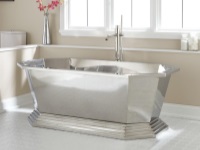
What is meant by this term?
When we talk about iron bathtubs, we usually mean plumbing products made of metal. The most popular metal alloys used to make bathtubs are cast iron and steel. Both are an alloy of iron and carbon. However, the chemical formula of these compounds is different, and, as a consequence, their properties are not at all similar to each other. In the composition of these alloys, there are additional components that largely determine the performance characteristics of sanitary devices.

Bathtubs made of steel and cast iron are usually contrasted with more modern products of acrylic и kvaril. Today we will talk about the features of iron bathtubs, study their advantages and disadvantages, as well as get acquainted with the recommendations of professionals concerning the choice and installation of such sanitary equipment.
Types
So, in the usual sense, iron baths come in two varieties:
- Steel;
- Cast iron.
The first, in turn, are divided into baths made of structural steel, and baths made of stainless steel. Stainless steel baths are not particularly popular among customers and are on sale very rarely, so we will not dwell on them in detail. In this article, the phrase "steel bath" will mean the familiar to us all plumbing fixtures made of structural steel.
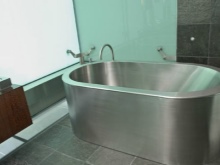
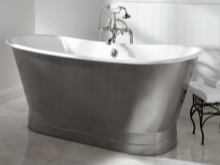
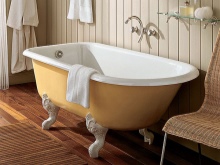
Steel
Pros:
- low weight - a bathtub made of steel weighs only a few kilograms, it is much lighter than similar products made of other materials;
- low price - steel baths are considered the cheapest of all the options on the market;
- high thermal conductivity - this bath heats up almost instantly, so you can immediately proceed to the water procedures, without waiting until the metal reaches a comfortable temperature;
- the plasticity of the material - due to this property of steel, baths made of this metal can be almost of any shape and size;
- easy care and hygiene - steel is considered one of the safest materials, so equipment for hospitals and catering facilities prefer to make it from it, steel product is well tolerated by cleaning and even sanitary treatment with potent antiseptics.
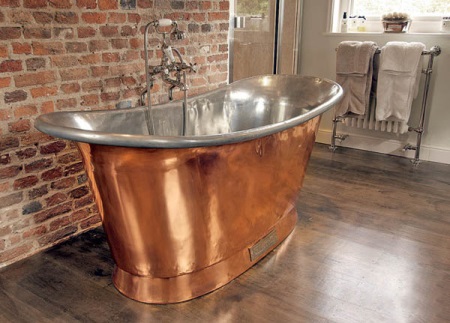
Disadvantages:
- insufficient wall thickness - ideally, the thickness of the walls of the steel bath should be not less than 0.4 cm, but very often manufacturers tend to save on material, resulting in products that are easily deformed;
- short cooling time - good thermal conductivity is not only a virtue, but also one of the main drawbacks of steel baths, because the bath and the water in it cool down very quickly;
- Lack of sound insulation - steel conducts sound very well, so the noise of pouring water is several times stronger, which may cause permanent trouble for your family and neighbors.
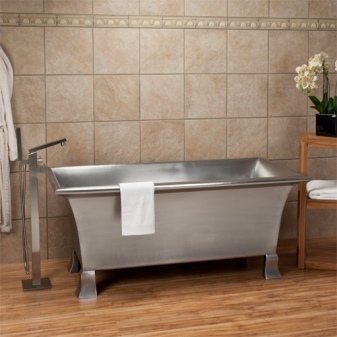
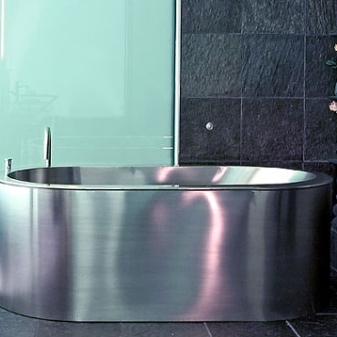
Cast iron
Pros:
- durability - cast iron is one of the first materials that began to be used for the production of sanitary ware; cast iron products have an incredibly long service life, reaching dozens of years;
- excellent thermal insulation - cast iron baths heat up not as quickly as steel ones, but they keep heat much longer, without letting the water cool down;
- durability - cast iron baths are very durable, so they are not afraid of mechanical stress (except for the enamel coating - it can be damaged); in addition, such baths well withstand temperature changes and contact with aggressive cleaners;
- Sound insulation - cast iron almost completely absorbs the sound of water hitting the bottom of the tub, so you do not have to worry about providing additional noise reduction.
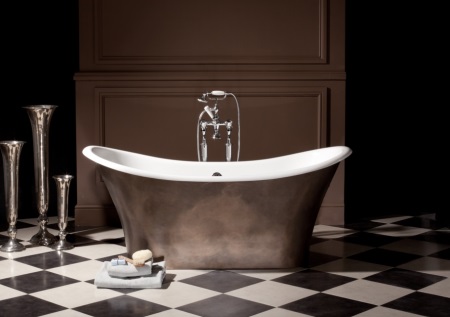
Cons:
- large size - the problem is not even in dimensions (they almost do not differ from the standard ones), but in a very high weight of cast iron baths; this factor significantly complicates the delivery and installation of cast iron plumbing;
- the higher price category - in spite of the fact that cast-iron baths belong to the budget category, they are more expensive than baths of structural steel;
- limited choice - the peculiarities of the material and the method of production do not allow making cast iron products, distinguished by a great variety of shapes and sizes, there are usually only a few standard models of cast iron bathtubs on sale.
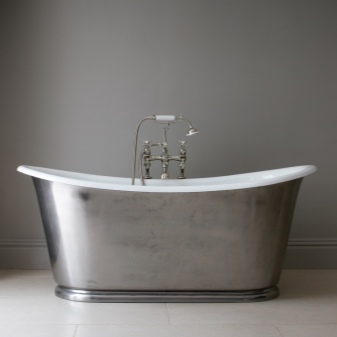
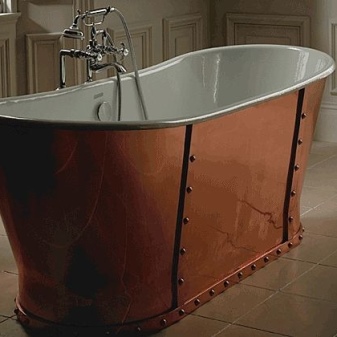
Noise insulation
The information in this section does not apply to all types of iron bathtubs, but only to those varieties that are made of steel. As we have already said, poor soundproofing is one of the main problems faced by owners of steel bathtubs.
Let's consider the most popular and affordable ways to solve this problem:
- Polyethylene foam - is a soft, porous material that is sold in rolls. It is used for noise, heat and sound insulation as well as to protect fragile objects from mechanical damage. The bottom and walls of the bathtub should be completely covered with several pieces of PVC, attaching them to the usual construction adhesive.
- Technical cork - is environmentally friendly and therefore absolutely safe finishing material. It does not emit harmful, toxic substances even when heated strongly, so it is excellent for use in a house where there are small children.
- Assembling foam - is an almost universal building product that comes in handy in a variety of situations. Before you apply the foam on the bottom and walls of the bath, you should first degrease and dry the surface. It is better to work with gloves, as the product is poorly cleaned from the hands.
- Car soundproofing - is a method that was probably invented by car enthusiasts. It is convenient in that it does not involve a complete covering of the surface of the bath with soundproofing material - it is enough to glue two or three pieces of cloth on the bottom. Read more about the method of installation in the instructions for use that came with the material.
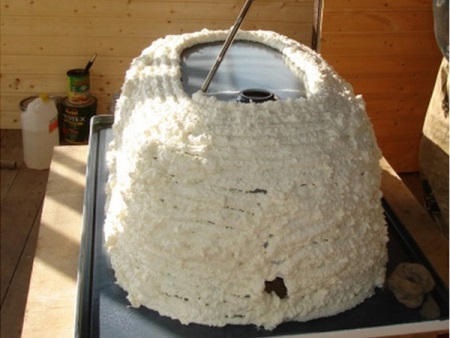
View the process of noise insulation of steel baths in the following video.
Installation
To install an iron bathtub, traditional methods are usually used - bricks, frame base and support legs, or metal corner. All of these methods are very reliable, as they have been tested for decades. There are a few general rules of installation of iron bathtubs, which should be followed, regardless of the chosen method of installation:
- The siphon should be connected to the drain hole before the bathtub is mounted in place - otherwise you will not be able to get to it later.
- Before you begin, you must prepare the place of installation: clean it of dirt and debris from building materials, impregnate the surface with a compound that prevents fungus and mildew. It is better to work only on a dry and relatively clean surface.
- After preparing the bath for installation, do not forget to "try it on" in advance to the mounting location. The product must be aligned horizontally (you will need a construction level) and put on the wall markings, according to which the installation will be made.
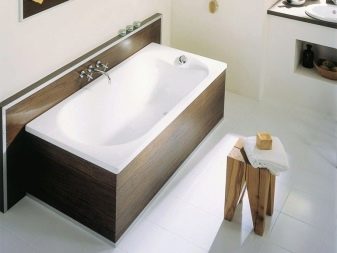

Selection tips
- Before you go to the store to buy, study all the existing varieties of iron baths. Perhaps instead of the traditional rectangular fonts you will want to buy something unusual, such as semicircular or asymmetric bathtub.
- Take a closer look at modern models of iron bathtubs. Some of them have very interesting features, such as built-in whirlpool panels or a special coating with a self-cleaning effect.
- All iron baths (except those made of stainless steel) have an enamel coating. The color of enamel can be any color, so do not get hung up on a snow-white coating. If the style of design of your bathroom allows the use of colored sanitary ware, pay attention to models of beige, blue, green and other colors.




